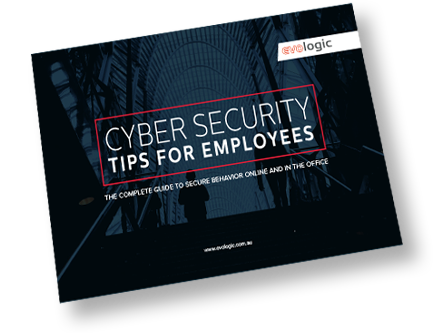Part 1 – Client Feedback
Everyone knows feedback is important, but I’m not convinced most companies do anything with it! Receiving feedback is an opportunity to improve. If we think we know everything, we’ll never learn anything.
I never want Evologic to be accused of not listening. Evologic should be the partner that pays attention, asks for feedback and genuinely uses it. It’s just information without an action that follows, and if nobody knows you’ve acted on feedback, it’s unlikely they’ll continue to provide it!
There are four types of feedback we seek out and give focused attention to at Evologic. No doubt there are more out there, but we’ve found the following to be the most valuable to us as a business.
- Client Satisfaction – A transactional-based measure of satisfaction. Each Service Request or Incident we complete is checked for Positive, Neutral and Negative emotion. How did we treat you?
- Relationship measurement – A relationship test such as Net Promotor Score at the Client/Account Level, or functional level (e.g. Accounts, Project etc.)
- Employee Feedback – given by the Employee to the Business.
- Manager Feedback – given by the Manager to the Direct Report.
Here’s what we measure, what we use to measure it, and what we do with the response!
Client Satisfaction
We’ve all been in a store such as Ikea or the Airport (pre-COVID times obviously) and spotted the Smiley/Sad face buttons on the way out. In that context, a business is looking for a general “temperature” gauge of its operations. As large numbers of customers leave the venue, a picture is gathered from the aggregation of responses, to how the business is delivering.
At Evologic, every transaction we have is tied to a human being and has a clear start and end, which gives us the added benefit of being able to analyse each transactional, the Client/Account aggregated responses, as well as the overall “temperature” of the client base.
In addition to transactional feedback, more information is required. That leads us to bi-annual key client surveys with more opportunity to provide qualitative responses, and even Client Research Projects to ensure we are meeting all the technology needs of our clients.
What we use
We use an industry-specific tool to add the three smiles/neutral/sad faces to the bottom of our “We’ve Completed Your Ticket” emails. Survey Monkey could be used to achieve the same thing. Keeping it simple (quantitative) to increase the likelihood of a response.
What we do with the information
Here’s where the business value comes in. Each time we receive a negative response from an experience, we do the following:
- Contact the client to understand the negative experience better.
- Add it to our weekly Leadership Team agenda.
- Discuss and Solve with all heads of departments so the whole business benefits from the gift of a negative review!
- Perform a Post Incident Review. This might result in an email to client contact describing the outcomes, or a formal 1-page document presented to the business, showing what happened, what we uncovered, and what we have done to try to ensure it does not happen again.
- Most importantly – IMPLEMENT CHANGE!
What we are hoping to achieve
Never waste an opportunity to improve. Negative feedback is often a driver of positive client engagement if handled correctly. A negative review is a gift that should not be squandered!
Prove to the client that we take feedback seriously, it’s heard, and most importantly, we take action, closing the loop to drive continuous improvement across our services.
Relationship Measurement
A quantifiable Relationship Test such as the Net Promoter Score at the client/account level picks up where the transactional/client satisfaction results leave off. As a business that engages with other businesses, we need to check how we are going at more than one level to ensure we meet all requirements or all the stakeholders. The transactional test, while it covers the majority of the contacts at a client, it doesn’t tell us how well our business is working with the client’s leadership or departments.
Each of these areas is a great test for improvement. On the completion of a project, on the bottom of an invoice, or at the end of an Account Management meeting, why not ask the famous Net Promoter Score question; “On a scale of 1 to 10, based on this meeting/invoice/project, how likely would you be to refer Evologic to a friend or colleague?”
What we use
A simple Microsoft Forms form on completion of a meeting, closeout of a project etc. If you’ve got Microsoft 365, you’ve got Microsoft Forms. Just go to Microsoft Forms online and have a play around. It’s actually really easy.
What we do with the information
Testing at the department and relationship level allows us to pinpoint where in our overall business, we can improve. Our Service Delivery might look great (high CSAT), but we might be missing the strategic goals of the business. Without a relationship test at the account leadership level, we’ll never know that! We might be great across the board, but our invoicing is inconsistent and frustrating to our clients. Testing at various levels improves granularity and allows targeted progress.
The business and each department that directly interacts with our clients have a Weekly Scorecard number to get an overall understanding of engagement, as well as per client.
What we are hoping to achieve
Are we meeting the overall needs of the client? Is our invoicing incorrect causing pain? Are our major projects poorly managed or taking too long? A test at the completion of these interactions allows the continuous improvement cycle all our business should be on, to pinpoint exactly where we need to improve.
I said it at the beginning, and I’ll say it at the end if we think we know everything we’ll never learn anything. Evologic has always been and will always be a learning organisation. Development is one of our core values, and who better to listen to that our clients!
I’ll follow this post up with a Part 2, outlining the Employee and Management Feedback processes we use to drive employee engagement, retention and development.


